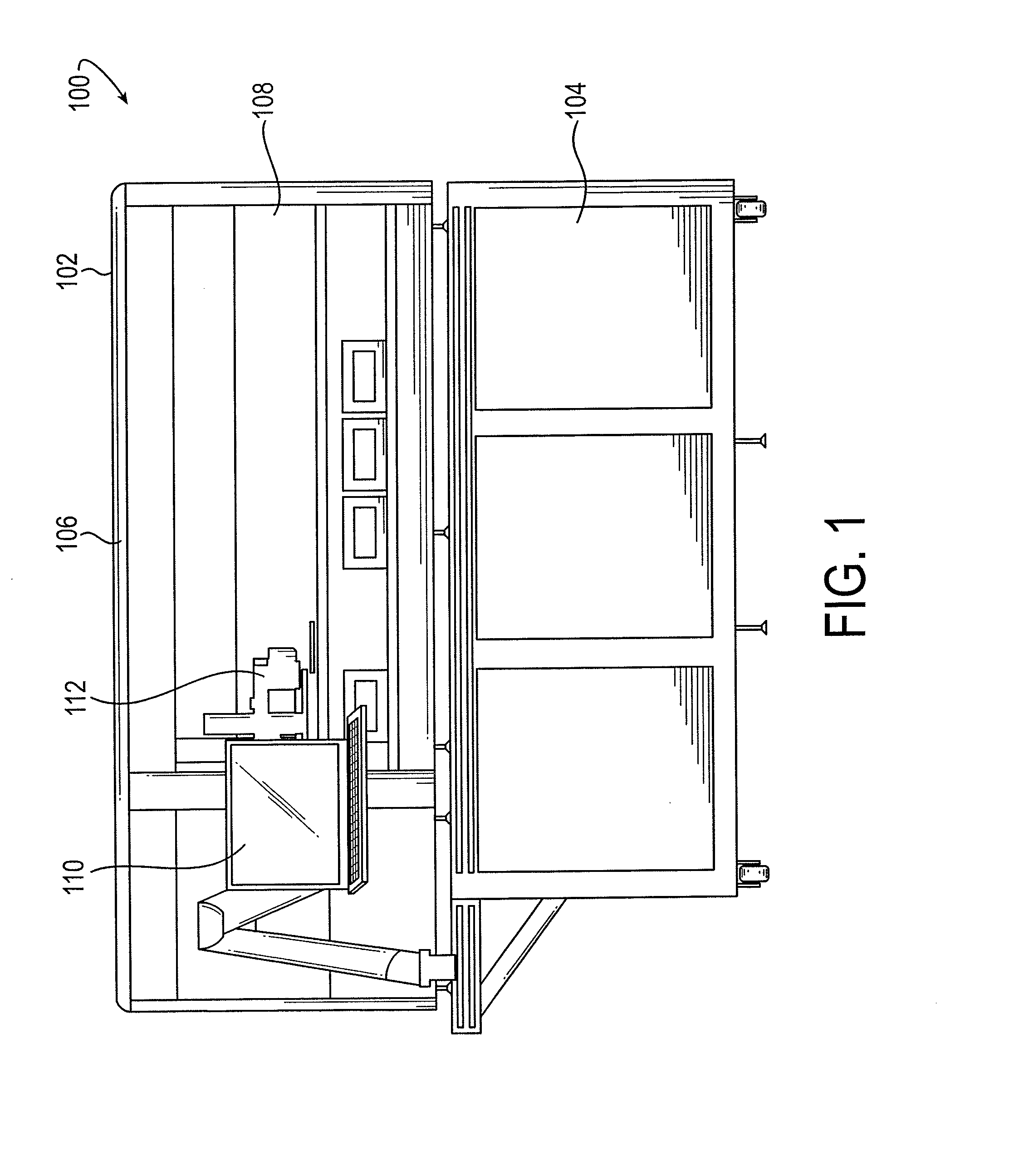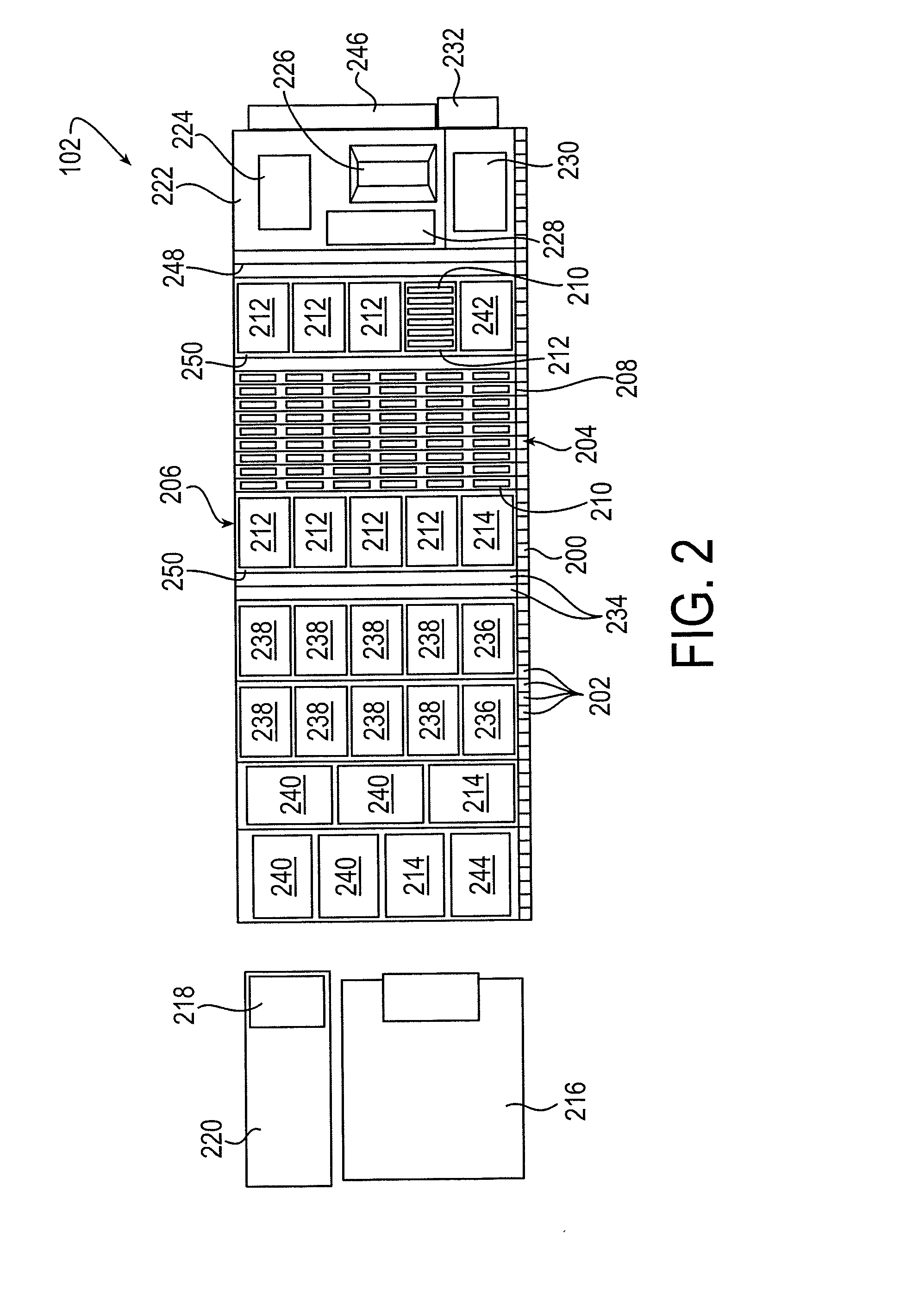Sample processing apparatus and methods
a processing apparatus and sample technology, applied in biochemistry apparatus and processes, laboratory glassware, instruments, etc., can solve the problems of difficult, burdensome, uncomfortable, or even painful to obtain a sample from the subject, manual steps comprising the protocol may not be readily performed by an automated system, and the process may not be readily-amenabl
- Summary
- Abstract
- Description
- Claims
- Application Information
AI Technical Summary
Benefits of technology
Problems solved by technology
Method used
Image
Examples
first processing example
[0287]An embodiment of a sample processing module assembled according to the embodiment of FIG. 2 was used to process human tissue samples according to the process described with reference to FIG. 3. Specifically, samples in vials of PreservCyt® media were manually mixed and dispensed into separate tubes of a four-tube tube strip. Each tube in the strip was a 6 milliliter tubes with conventional Sarstedt cone geometry. The tube strips were manually loaded into the processing module. At this point, automated processing began. First, the processing module loaded each tube strip into a tube strip holder that holds six tube strips. A Hamilton pipettor loaded with 5 milliliter tips dispensed 400 micro-liters of HC2 Sample Conversion Buffer into each tube. Next, the tube strip holder (including the tube strips and samples) was mixed on a Hamilton orbital shaker operated for 30 seconds at 800 rpm on a 3 millimeter orbit. The tube strip holder (and strips and samples) was then loaded into a...
second processing example
[0288]The process and apparatus described in the First Processing Example were modified by making the following changes. First, the samples were originally provided in SurePath™ media, rather than PreservCyt®. Second, SCB was not dispensed into the tube strip. Third, the pre-centrifuge mixing step (step 310) was not performed. Fourth, the centrifuge step (step 312) was conducted at a somewhat lower gravitational load, and for approximately ten minutes. Fifth, the samples were decanted by rotating the tube strip in a first direction to an angle of 210° (measured downwards from vertical), pausing for approximately 0.5 to 1 second, and then continuing to rotate the tube strip in the first direction until the tube strip was upright (i.e., a full 360° rotation with a 0.5 to 1 second pause at 210°). And sixth, the incubation step (step 326) was conducted for approximately 90 minutes, with some variation in the mixing process. The remaining steps and procedures were identical to those desc...
third processing example
[0289]An embodiment of a sample processing module assembled according to the embodiment of FIG. 4 was used to process human tissue samples according to the process described with reference to FIGS. 5 and 3. In this example, individual samples in PreservCyt® vials were vortexed according to the conventional manual HC2 procedure, and then manually loaded into vial racks. The loaded vial racks were loaded into the processing module, and automated processing began. The automated process began by operating Hamilton pipettors loaded with 5 milliliter pipette tips to hydraulically mix the contents of each sample vial, and pipette 4 milliliters of each mixed sample solution to a respective tube in a four-tube tube strip, such as the tube strip described in the First Processing Example. From here, the processing module continued processing the samples as described above in the automated processing steps of the First Processing Example.
PUM
 Login to View More
Login to View More Abstract
Description
Claims
Application Information
 Login to View More
Login to View More - R&D
- Intellectual Property
- Life Sciences
- Materials
- Tech Scout
- Unparalleled Data Quality
- Higher Quality Content
- 60% Fewer Hallucinations
Browse by: Latest US Patents, China's latest patents, Technical Efficacy Thesaurus, Application Domain, Technology Topic, Popular Technical Reports.
© 2025 PatSnap. All rights reserved.Legal|Privacy policy|Modern Slavery Act Transparency Statement|Sitemap|About US| Contact US: help@patsnap.com



